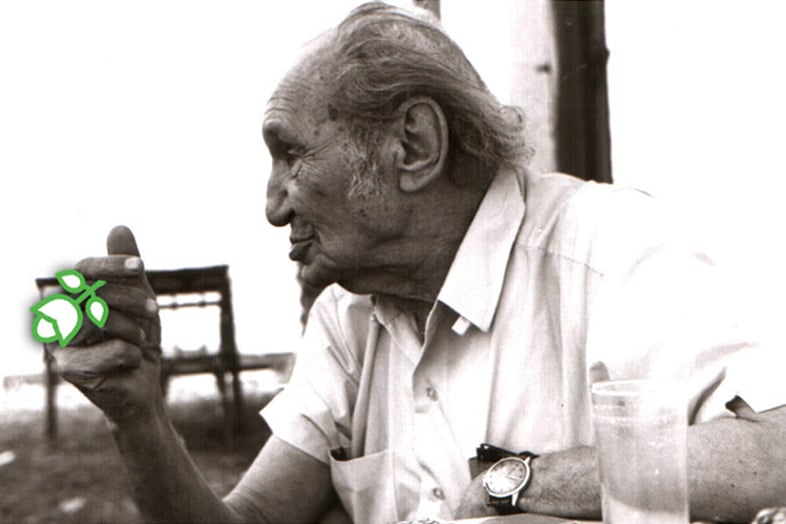
Fisherman of Halicarnassus: Cevat Sakir Kabaagacli
Before Cevat Sakir Kabaagaçli, also known as Fisherman of Halicarnassus, was exiled to Bodrum, not many people knew of Bodrum, and again, nobody knew about the Fisherman of Halicarnassus. Bodrum made Cevat Sakir Kabaagacli the Fisherman of Halicarnassus, and the Fisherman of Halicarnassus made Bodrum a more beautiful place.
There is a trace of the Fisherman of Halicarnassus on the stones, soil, flowers and trees, who knows, even may be in the sun of Bodrum. There are also traces of Bodrum in all the works of Fisherman of Halicarnassus … Fortunately these two friends came together. One might even say, fortunately, the exiled Cevat Sakir Kabaagacli came to Bodrum.
Before we start our article, we greet you with a heartfelt ‘Hello’ filled with the enthusiasm of Fisherman of Halicarnassus. Because Fisherman of Halicarnassus likes to say ‘Hello’;
“First of all, there is something manly about saying ‘Hello’. Moreover, the meaning is beautiful; Relax, it means, no harm will come from me. Then, we should not take our minds off our work, whether we say “good morning”, “good evening” or “God be with you”. There is no need to occupy our minds to think, I can replace them with a ‘Hello’ and be done with it. There is one more thing, when the word ‘Hello’ is spelled in old letters, it looks like a sailboat. Maybe this has an effect on my liking ‘hello’.”
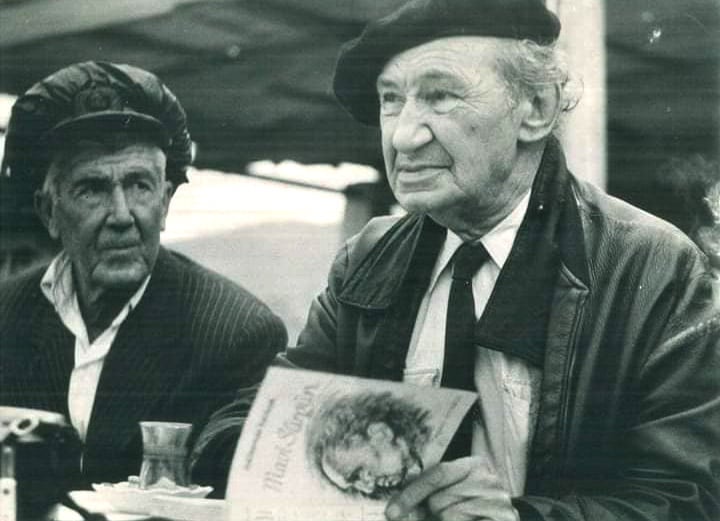
Who is the Fisherman of Halicarnassus?
Cevat Sakir Kabagacli was born on April 17, 1890 in Crete, where his father Mehmed Sakir Pasha was the high commissioner. His family, Sakir Pasha Family, was one of the last remaining rooted families of the Ottoman Empire. Mehmet Sakir Pasha was a statesman who was an ambassador and governor in Crete and Athens. His mother was Sare Ismet Hanim from Crete.
His mother, Sare Ismet Hanim, saw the Prophet Moses (Musa) in her dream the night before she gave birth to Cevat Sakir, he was named ‘Cevat’ after his uncle Grand Vizier Cevat Pasha and ‘Sakir’ after his father Mehmed Şakir Pasha.
The eldest of six children, Cevat Sakir Kabaagacli spent most of his childhood in Athens. He received his primary education in the neighbourhood school established by his father in Buyukada. His English was very good thanks to the English lessons he took during primary school. Since his English was very good, he got accepted to the first grade at Robert College without prep school and graduated with honours (1904).
Although he wanted to study maritime, his family sent him to Oxford University in London where he chose to study Modern Age History. Oxford’s library, where he spent most of his time, was an invaluable blessing for Cevat Sakir who loved to read.
He followed an Italian beauty named Agnessia Kafiera, whom she met in London during his university years, to Italy. Here he took painting and Latin lessons and learned Italian. A year later, when Agnessia become pregnant, they got married and returned to Istanbul where his daughter, Mutarra Agustina, was born. Cevat Sakir started to live in his family’s mansion in Buyukada with his wife and child.

Right: Mehmet Sakir Pasha and Cevat Sakir Kabaagacli
Deadly Night
It was the period before the World War I. When the family fell into financial difficulties, his father, Mehmed Sakir Pasha, decided to settle in Kabaagaçli farm in Afyon. A painful event awaited the Kabaagaçli family in the autumn of 1911. In a heated argument between Cevat Sakir Kabaagacli and his father Mehmed Sakir Pasha, his father got killed with a bullet from his son’s gun. Cevat Sakir killed his father by accident. This incident saddened the family very much. Cevat Sakir was sentenced to 14 years even though he was tried with death penalty.
There were many rumours about this unfortunate event: it was said that Cevat Sakir got into a heated argument and killed his father because Mehmet Sakir Pasha got into –or forced her into- a relationship with his Italian daughter in law. In an interview many years after this incident, Cevat Sakir Kabaagacli’s son, Sina, denied these allegations, saying,
“This allegation is absolutely false. If it was true, my father would have certainly grabbed this life line at the shadow of the gallows. However no such incident was mentioned neither by my father, nor anyone else. During the hearings my father claimed repeatedly that his father committed suicide. Furthermore, if these allegations were true, wouldn’t my grandmother appeal to the court instead of watching her beloved son being sent to gallows?”
Although no one knew exactly what happened, years later, Cevat Sakir Kabaagacli described that night in a letter he wrote to his close friend Azra Erhat;
“Let’s get to the deadly night. The dispute was on very complicated issues and it was very violent. My father always kept different pistols and weapons on the farm because he was afraid of an assassination being a rich man and a soldier. The quarrel reached such a point that he fired at me. I randomly grabbed a pistol there. I fired without aiming at him. First his, and then mine went off.
It was almost simultaneous. Without a doubt, otherwise I would’ve been the one ending up dead. No, he died! I was also ruined, which is worse than death. He survived. I felt terrible pain, but no remorse. Something more horrible happened to me. I lost confidence in myself. So I think of myself as a lie since that day. I get angry when they praise me. “
After serving a seven year sentence, Cevat Sakir Kabaagacli got amnesty and was released due to tuberculosis.

Blue Exile
Cevat Sakir returned to Istanbul in 1918 to find himself lonely as the members of the family desert him, except for his mother. Furthermore, his Italian wife Agnessia, along with their daughter Muttara, returned home to Italy.
Cevat Sakir took refuge in his uncle’s house in Uskudar. His first cartoon got printed in Sedat Simavi’s Diken newspaper. He then started writing and drawing cartoons for Mehmet Zekeriye Sertel’s magazines, Resimli Ay and Resimli Hafta. He got married to his uncle’s daughter Hamdiye who is a teacher and his son Sina was borns in 1925.
He maintained his living by translating, writing, illustrating, doing new style illuminations, drawing cartoons and making cover pages for weekly magazines. He had an important role in the development of magazine covers with pictures in Turkish press. His works found place in magazines such as Guleryuz, Yeni Inci, Resimli Gazete, Resimli Hafta, Zumrud-u Anka, Resimli Ay.
When the police appeared at his doorstep one afternoon, Cevat Sakir was caught totally unaware. They were there for an article he has written. When he was told that he has to go to the police station he got worried and curious. He was taken to Uskudar police station, accompanied by two police officers on each side.
When he arrived at the Üsküdar police station, his anxiety did not cool. Even when they said “You will go to Ankara Independence Court”, he couldn’t find out why, they answered Cevat Sakir Kabaagacli by saying “You will find out when you get there”.
Hearing the name of the Independence Court, he was filled with fear, knowing very few who go there survive. Not knowing why he was taken to Ankara Independence Court, he set out again with the police officers to get on the train from Haydarpasa. When they arrived in Haydarpasa, he found out that Zekeriya Sertel, Responsible Director of Resimli Hafta magazine, would be tried in Ankara Independence Court with him.
Zekeriya Sertel, who is also his close friend, told him why he would be tried: the Ankara Independence Court claimed that in his article titled “How those sentenced to death in prison go to the gallows” published under the pseudonym “Hüseyin Kenan” in the 13 April 1925 issue of Resimli Hafta magazine, he wanted to provoke the people against military service. Cevat Sakir Kabaagacli and Zekeriya Sertel left for Ankara, without knowing that they would be tried for death sentence. Cevat Sakir Kabaagacli was to be tried for a death sentence for the second time! How many people would get tried for a death sentence twice in his lifetime…
Zekeriya Sertel was not as worried as Cevat Sakir and tried to comfort him; “There’s nothing wrong with what you have written, it just happens to be the wrong time,” he said. His relaxed manner made Cevat Sakir think; “They’ll just spit in our faces, telling us not to misbehave again and then send us back to Istanbul”…
They found out that they’ll be tried for a death sentence upon arrival to court where they were taken to a small court room, which was too narrow to listen to a death ruling. Though the chief judge, Ali Cetinkaya tried for a death sentence, with the decision of Kilic Ali Bey they were exiled to Bodrum. On hearing the sentence, Cevat Sakir wrote in Mavi Surgun, “I almost cuddled and kissed the guys.”
Zekeriya Sertel’s exile was changed to Sinop afterwards. Zekeriya Sertel arrived in Sinop in a couple of days but Cevat Sakir’s eventful trip to Bodrum took three and a half months. Cevat Sakir wrote about this court process and his eventful trip of three and a half months to Bodrum in his book, Mavi Surgun.
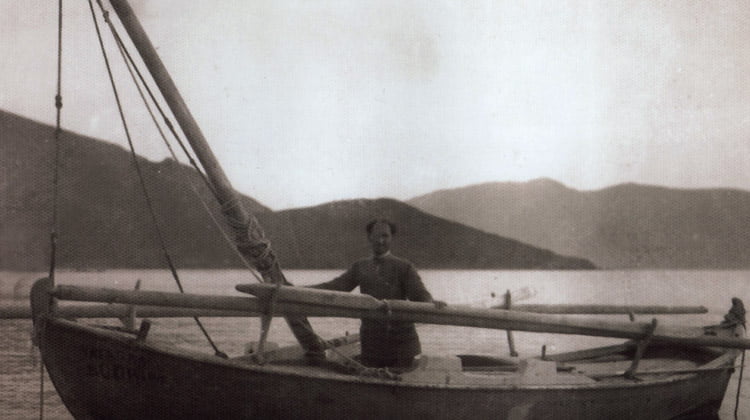
From Cevat Sakir Kabaagacli to Fisherman of Halicarnassus…
Though he’s heard of its name, Cevat Sakir knew nothing about Bodrum. The name suggested darkness (Bodrum means basement in Turkish) but once he got there, he realized he got to a heavenly place. Furthermore, he got a permission of the governor of Mugla to roam freely, except go out to the sea.
As Bodrum Castle was in ruins he couldn’t serve his time there. Cevat Sakir Kabaagacli, who was in his thirties, got a friendly greeting in Bodrum and the district governor helped him find a house for rent. He went with the district governor to see this two storey house with four rooms, with one door opening to the sea and the other to the street and to meet the landlord.
When they got to the house, he reflected; “As soon as I see the house I told them I’ll rent it. The landlord was in the tavern next door. When he arrived the district governor whispered something in his ear and he whispered back an answer. The district governor looked at me with a serious face and said ‘twenty five’ and I didn’t listen any further. I had twenty seven, twenty eight liras in my pocket. I pulled it out and gave it to him.
The district governor looked at me as though I was crazy, saying, “Mr. Cevat, the rent is 25 kurus”. This time it was my turn to look at him as though he was crazy. The rent was really only 25 kurus. A house right by the sea for twenty five kurus was unheard of, I paid six month’s rent on the spot.”
After months, Cevat Sakir was going to have a comfortable sleep in his own bed, in his own house. He entered the house and got on his knees, began sobbing with joy.
Two months later his wife, Hamdiye and son Sina arrived in Bodrum. Following days he discovered Bodrum inch by inch, learned fishing from the locals. He didn’t neglect writing and translating. He loved his exile, Bodrum, which was a paradise. Inspired by Bodrum’s name in antiquity, Halicarnassus, he started using Fisherman of Halicarnassus as a pseudonym in his articles.
He was no longer Cevat Sakir Kabaagacli, but Fisherman of Halicarnassus. Bodrum turned him into Fisherman of Halicarnassus and he did his best to protect and improve Bodrum.
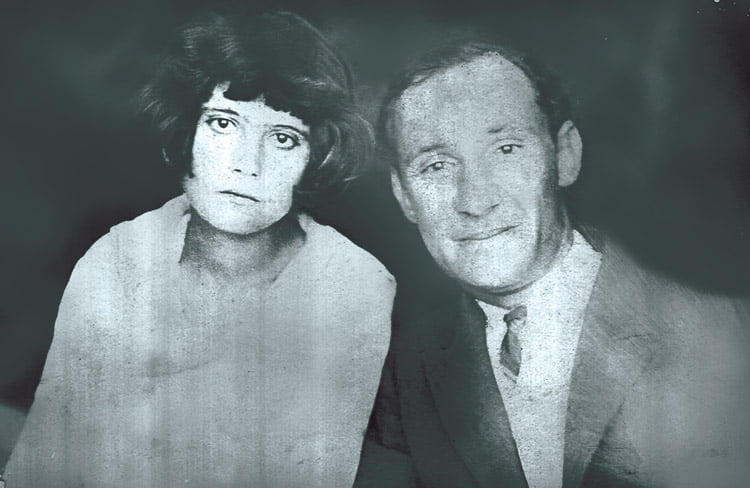
After a while he fell in love with Hatice, daughter of a Cretan migrant family and divorced Hamdiye to marry her. They had three children out of this marriage; Ismet, Aliye and Suat.
Ismet was born in Istanbul, Aliye and Suat in Bodrum. Fisherman of Halicarnassus told about his love for Hatice in ‘Musa’ character in his book Mavi Surgun. ‘Musa’ in Mavi Surgun was Fisherman of Halicarnassus himself.
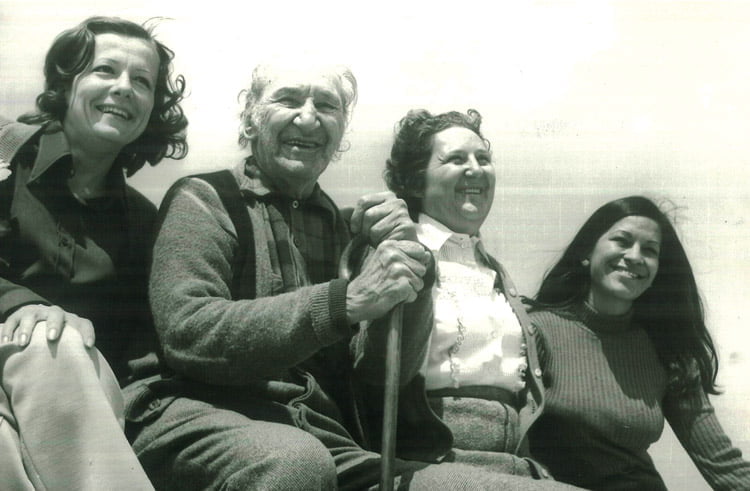
The Real Exile Begins
After a year and a half of his three year sentence in exile, the Independence Court decided he sould serve the rest of his sentence in Istanbul. For the Fisherman of Halicarnassus the real exile began then! Reluctantly, they moved back to Istanbul. However, his mind was made up to live in Bodrum until he dies. He counted the hours and days to get back to Bodrum. He continued to write and translate in Istanbul to make a living.
In preparation to his life in Bodrum, he spent all the money he saved in books on agriculture and fishing. He prepared fishing tackles and made improvements on tackle sets. He found the sponge diving equipment they used in Bodrum primitive so he made improvements on them. He did all this for his friends in Bodrum, for Bodrum. He made a promise to himself, “That place is already a heaven, but I pledge to make it even more of a heavenly place.”
He went to the Spice Bazaar near the time he is due to leave for Bodrum and bought seeds. He climbed a palm tree near a hotel called Otel Ciyakomo in Buyukada to pick up seeds. As it turns out this tree was right next to the hotel/house exiled Trotsky was staying. A few guards came and gathered him, not believing that he climbed the tree to collect seeds. They assumed he was trying to send a coded message to Trotsky, and detain him. The officers at the police station recognized him and they realized there was a mistake.
When the end of his 3 year exile came up, he turned up at the police station where they couldn’t find any records regarding his conviction and he found out that his exile has actually ended when he came from Bodrum to Istanbul. It meant that he had to spend a year and a half away from Bodrum for nothing! He said “I lost a year and a half of my life,” in anger.

‘Hello’ Fisherman of Halicarnassus
He immediately moved back to Bodrum with his family and started planting the seeds he brought from Istanbul. He bought a small boat with the money he saved as he was banned from going out to the sea during his exile, and started exploring the bays of Bodrum with his small boat.
Later, he bought a seven meter boat and named her ‘Yatagan’. His boat became his best friend and he explored every single bay with her. Fisherman of Halicarnassus was no longer just a writer, he was also a farmer, a teacher, a fisherman and a guide.
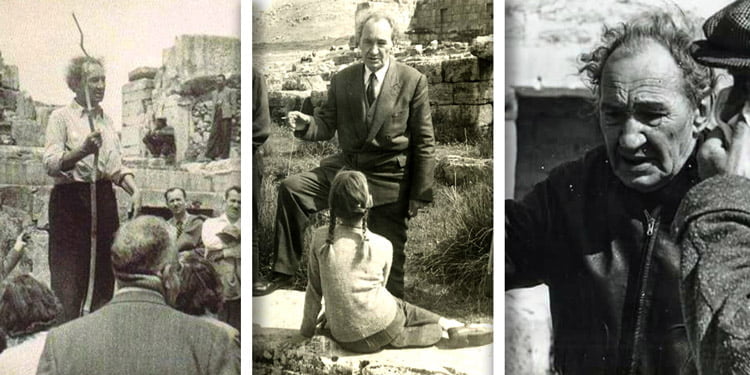
Fisherman of Halicarnassus as a Farmer
He wrote most of his work in Bodrum. However, he never neglected Bodrum. He bought agriculture books in English, French and Italian from abroad about farming in the southern region. He bought seeds suitable to Bodrum’s climate. He saved all his money to buy these expensive seeds. He took such an interest in agriculture, he got to know everything there is to know about the soil and became a perfect farmer.
They did not grow citrus (lemon, orange, tangerine, grapefruit) in Bodrum and Southern Anatolia those days. Fisherman of Halicarnassus committed himself to this and brought a variety of citrus seeds. His main objective was to bring grapefruit into the country as it is a fruit very rich in Vitamin C. He hand wrote a book of 300 pages about citrus, which people passed onto each other, which got lost eventually. He told locals of Bodrum how to grow these fruits one by one and answered every single letter he got, enquiring about citrus farming in Southern Anatolia.
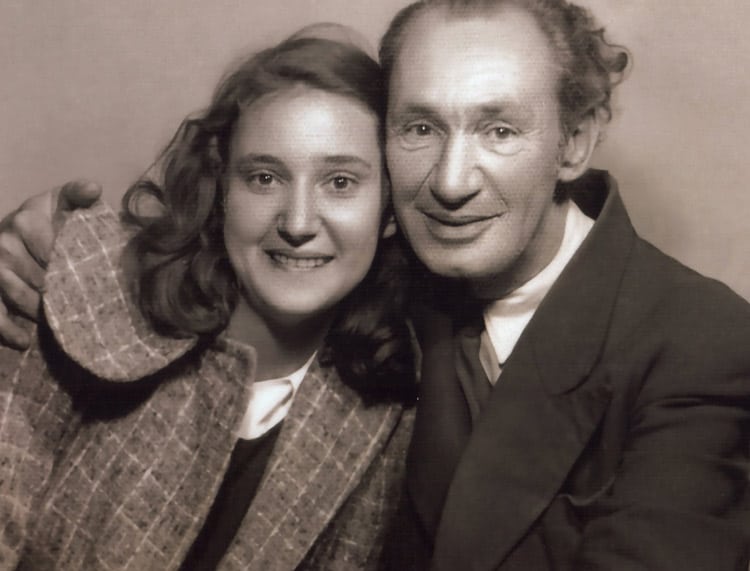
Defender of Anatolia
He adopted not only Bodrum’s, but entire Anatolia’s history. As he studied Modern Age in Oxford, Ancient Age philosophers such as Heraclitus, Anaxagoras, Thales, Socrates, Homer, Democritus, Anaximander, and Diogenes, which he got to know in Oxford Library, became his teachers.
It is there where he discovered the true importance of Anatolian civilizations. And he claimed that “Greek civilization is certainly the successor of Anatolian civilization and not the pioneer. Because the Greek civilization is not as old as the Anatolian civilization.” He based this thesis on Thales.
He did his best for people to appreciate the civilization we live in and the value of the historical sites we inherited from them. He wrote about these civilizations in his books so that we know what a treasure we live in.
Fisherman of Halicarnassus did his best to protect the historical monuments. He got upset about the most important parts of Mosoleum of Halicarnassus been taken to the British Museum in London and wrote a letter to the British Royal Family; “The historical artifacts in London are integrated to the blue of Bodrum. They shouldn’t be kept in London. They should meet back with the blue which they are a part of.”
The letter forwarded to the manager of the museum. Shortly, a sarcastic letter, addressed to Fisherman of Halicarnassus Cevat Sakir Kabaagacli arrived; “We take your suggestion very seriously. We had scientists analize the structure of the stones and it is true that they integrate with blue. Therefore we had the exhibition gallery painted in Bodrum blue. We thank you for your kind interest.”

‘Hello’ Izmir
Cevat Sakir Kabaagacli lived in Bodrum for about 25 years. With his children growing up and Bodrum not having sufficient education facilities for them, they moved to Izmir reluctantly. With the World War II going on, they fell into financial difficulties.
He left Bodrum with tears in his eyes. He filled his pockets with seeds and planted them all over Bodrum before he left. This farewell seeding took weeks. He sold his best friend, Yatagan, and the house he built with his own hands.
Fisherman of Halicarnassus had difficulty getting used to Izmir. He wrote for Gunduz Hikayeleri magazine and Tan, Cumhuriyet, Anadolu and Demokrat Izmir newspapers. He also worked as a tourist guide and guide trainer to make a living.
In 1945, after the war, the entire country was in a difficult situation. Many things, including gas, were sold with a ration, Izmir was no exception. Cevat Sakir Kabaagacli got sentenced to three to four months in prison for “insulting the spiritual character of the state” in a tavern he entered in the evening of a day when he could not get gas. Even in prison he continued translating to support his family.
He translated Bernard Shaw’s Man and Superman, and sent the translated parts to his daughter Ismet for her to post to Sabahattin Eyuboglu, who was the director of the Ministry of National Education at that time. Sabahattin Eyuboglu sent money to the family as soon as he received the translations.
By then, everyone heard the name of the Fisherman of Halicarnassus, because his novel Aganta Burina Burinata was published and it gained everyone’s appreciation. In the first court hearing, a group of university students yelled “Aganta Burina Burinata!” in support of the Fisherman of Halicarnassus. Finally, Cevat Sakir Kabaagacli, defended by six volunteer lawyers, got released.
He wrote his last books Deniz Gurbetcileri, Genclik Denizlerde, Hey Koca Yurt when he was living in Izmir. He couldn’t forget Bodrum and took every opportunity to go there to chat with his seaman friends and visit the trees he planted.

Last ‘Hello’ to Life
He named his apartment building ‘Hello’. This was the building where he would say his last ‘hello’ to life. He passed away in October 13, 1973 from bone cancer.
People from Bodrum went to Izmir by 15 cars to to pick up the Fisherman of Halicarnassus and a large crowd welcomed him at the Torba junction. His coffin was carried in the shoulders to Turbe Hill in Gumbet to be buried, as it was his last wish from foster son Sadan Gokovali.
“I want to be buried in Bodrum. I obviously love it there. Let them bury me somewhere near the Myndos Gate and reserve a place for Hatice next to me. I do not want a grave made of marble, concrete or anything. Find a stone, a tall headstone, without any inscription. Put it on the head of my grave. I don’t want writing by any means, just a simple headstone. Well my boat started taking water.
I do not like glitz, I do not need to be buried in a hill or a place with a view of the sea. After all, I cannot watch the sea from where I lie down, I keep the sea alive in my soul, always see it with the eyes of my heart. Suat says they want to bury me in Izmir so that they can visit often. I don’t want it. I love Bodrum, you know. To visit me, the children would have to travel, take a breath, albeit occasionally. I’m not going to ask for a minute of silence. Just a hello to the fisherman is enough.”
Books of Fisherman of Halicarnassus
Stories: Ege Kıyılarından, Merhaba Akdeniz, Ege’nin Dibi, Yaşasın Deniz, Gençlik Denizlerinde, Parmak Damgası, Dalgıçlar, Çiçeklerin Düğünü, Ege’den Denize Bırakılmış Bir Çiçek, Mavi Zamanlar
Novels: Aganta Burina Burinata, Ötelerin Çocukları, Uluç Reis, Turgut Reis, Deniz Gurbetçileri, Bulamaç
Otobiography: Mavi SürgünEssays: Anadolu Efsaneleri, Anadolu Tanrıları, Anadolu’nun Sesi, Hey Koca Yurt, Merhaba Anadolu, Düşün Yazıları, Altıncı Kıta Akdeniz, Sonsuzluk Sessiz Büyür, Arşipel
Children’s Books: Yol Ver Deniz, Denizin Çağrısı, Yol Ver Deniz, Gülen AdaRadio
Appearances: İmbat Serinliği
Sources:
- Mavi Sürgün – Halikarnas Balıkçısı – Bilgi Yayınevi
- Anadolu’nun Avukatı – Halikarnas Balıkçısı Belgeseli – Metafor Filimcilik
- Sabah Gazetesi ( 3 Eylül 1995 ) – Bir İnsan Bir Hayat – Nebil Özgentürk
- Mektuplarıyla Halikarnas Balıkçısı – Azra Erhat – Can Yayınları
- Bodrum Deniz Müzesi
- Anılar Akın Akın – İsmet Kabaağaçlı Noonan – Bilgi Yayınevi
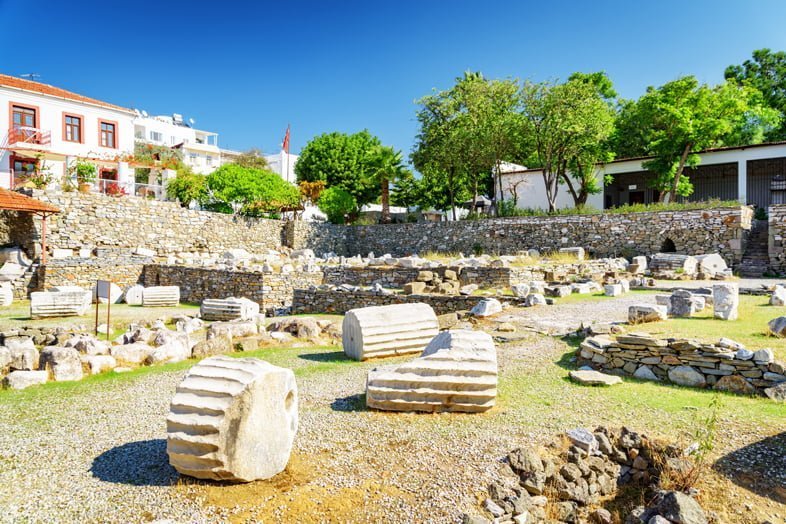





Add Comment